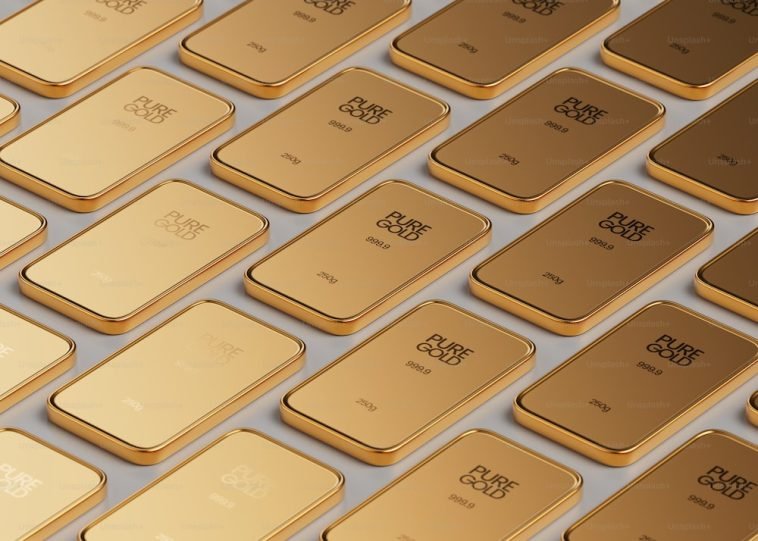Introduction.
Gold-plated jewellery is a popular choice for its affordability and aesthetic appeal, offering the look of real gold at a fraction of the cost.
However, over time, gold-plated jewellery can become dull, tarnished, or discoloured due to factors such as dirt, oils, and exposure to the elements.
To maintain the lustrous appearance and extend the lifespan of your gold-plated jewellery, regular cleaning and care are essential.
In this guide, we will explore effective techniques and tips to help you clean your gold-plated jewellery safely and restore its original shine.
By following these simple steps, you can keep your favourite pieces looking their best and enjoy their beauty for years to come.
Disclaimer.
Please note that any financial advice provided by me is for informational purposes only and should not be construed as professional financial advice.
Investing involves risk and you should always do your research and consult with a licensed financial advisor before making any investment decisions.
I do not endorse any specific investments and is not responsible for any financial losses or gains that may result from following our advice.
The information provided by me is based on our best knowledge and understanding of the subject matter, but we make no representations or warranties of any kind, express or implied, about the completeness, accuracy, reliability, suitability or availability with respect of the information, products, services, or related graphics contained in any of our responses.
How Do I Clean My Gold-Plated Jewelry?
To maintain the lustre and beauty of your gold-plated pieces, regular cleaning and proper care are essential.
In this article, we will guide you through effective techniques and share valuable tips on how to clean your gold-plated jewellery safely, restoring its radiance and prolonging its lifespan.
With a little effort and attention to detail, you can keep your gold-plated jewellery looking as stunning as the day you first acquired it.
1. Gather Your Cleaning Supplies.
Before you begin cleaning your gold-plated jewellery, gather the necessary supplies. You’ll need a soft, lint-free cloth, mild dish soap, warm water, a small bowl, a soft-bristled toothbrush or a soft cloth, and a jewellery polishing cloth. Avoid using abrasive materials or harsh chemicals, as they can damage the gold plating.
2. Assess the Jewelry.
Inspect your gold-plated jewellery for any loose stones or delicate components.
If you notice any loose parts, set the jewellery aside and consider seeking professional assistance for repair. Cleaning delicate jewellery in its weakened state may cause further damage.
3. Preparing the Cleaning Solution.
Fill a small bowl with warm water and add a few drops of mild dish soap. Mix gently to create a soapy solution.
Make sure the water is not too hot, as extreme temperatures can damage the gold plating.
4. Cleaning Process.
- Soak: Place your gold-plated jewellery in the soapy water solution and let it soak for a few minutes. This helps to loosen dirt and grime.
- Gently Clean: Using a soft-bristled toothbrush or a soft cloth, gently scrub the jewellery, paying attention to intricate details and hard-to-reach areas. Be gentle to avoid scratching the gold plating.
- Rinse: Thoroughly rinse the jewellery under warm running water to remove all traces of soap.
- Dry: Pat dry your gold-plated jewellery with a clean, soft cloth. Avoid rubbing vigorously, as this can cause friction and potentially damage the gold plating.
5. Polishing.
If your gold-plated jewellery requires further polishing, use a jewellery polishing cloth specifically designed for gold or gold-plated items.
Gently rub the jewellery in a back-and-forth motion to restore its shine and remove any remaining tarnish.
6. Storing and Maintenance.
After cleaning, store your gold-plated jewellery in a dry, tarnish-resistant jewellery box or pouch to prevent exposure to air, moisture, and abrasive surfaces.
Avoid exposing your jewellery to harsh chemicals, perfume, or hairspray, as these can accelerate the tarnishing process.
7. Professional Cleaning.
For intricate or valuable gold-plated jewellery, consider seeking professional cleaning and maintenance services.
Professional jewellers have the expertise and specialized equipment to handle delicate pieces and restore their brilliance effectively.
Conclusion.
Cleaning your gold-plated jewellery regularly is essential for preserving its beauty and extending its lifespan.
By following these simple steps and using gentle cleaning techniques, you can remove dirt, oils, and tarnish, restoring the radiance of your gold-plated pieces.
Remember to store your jewellery properly and avoid exposing it to harsh chemicals or abrasive materials.
With proper care and maintenance, your gold-plated jewellery will continue to be a dazzling accessory for years to come, enhancing your style and leaving a lasting impression.






GIPHY App Key not set. Please check settings